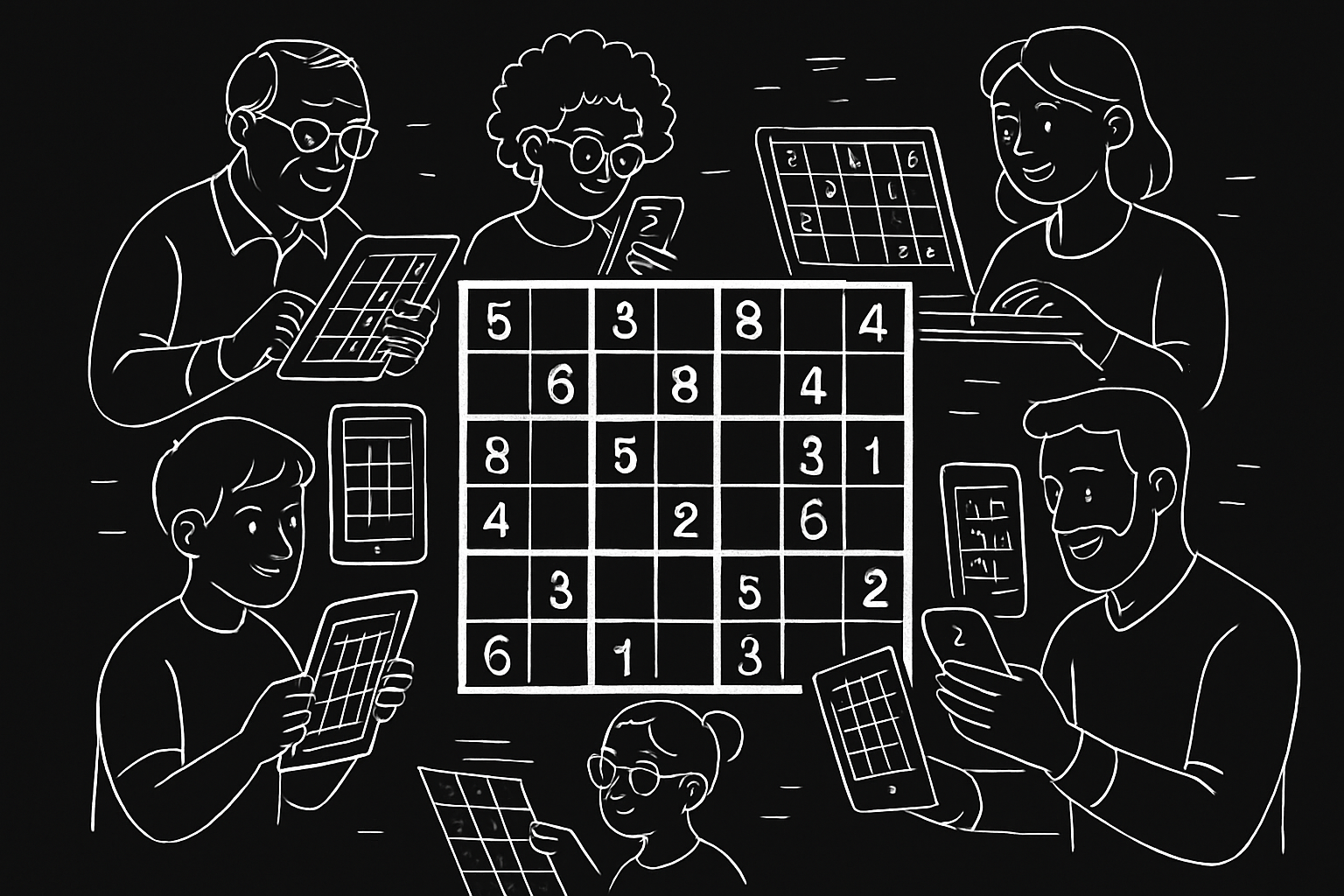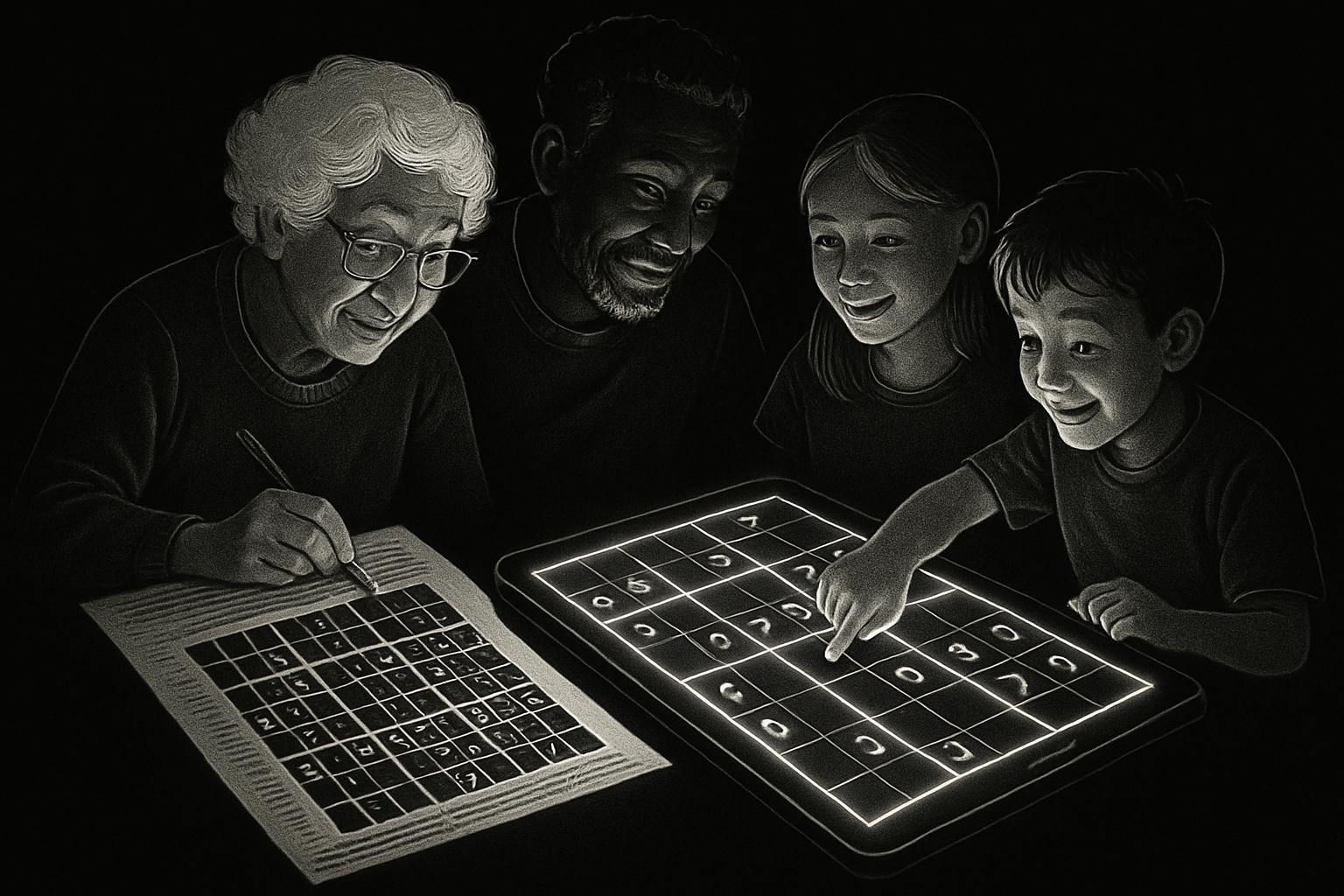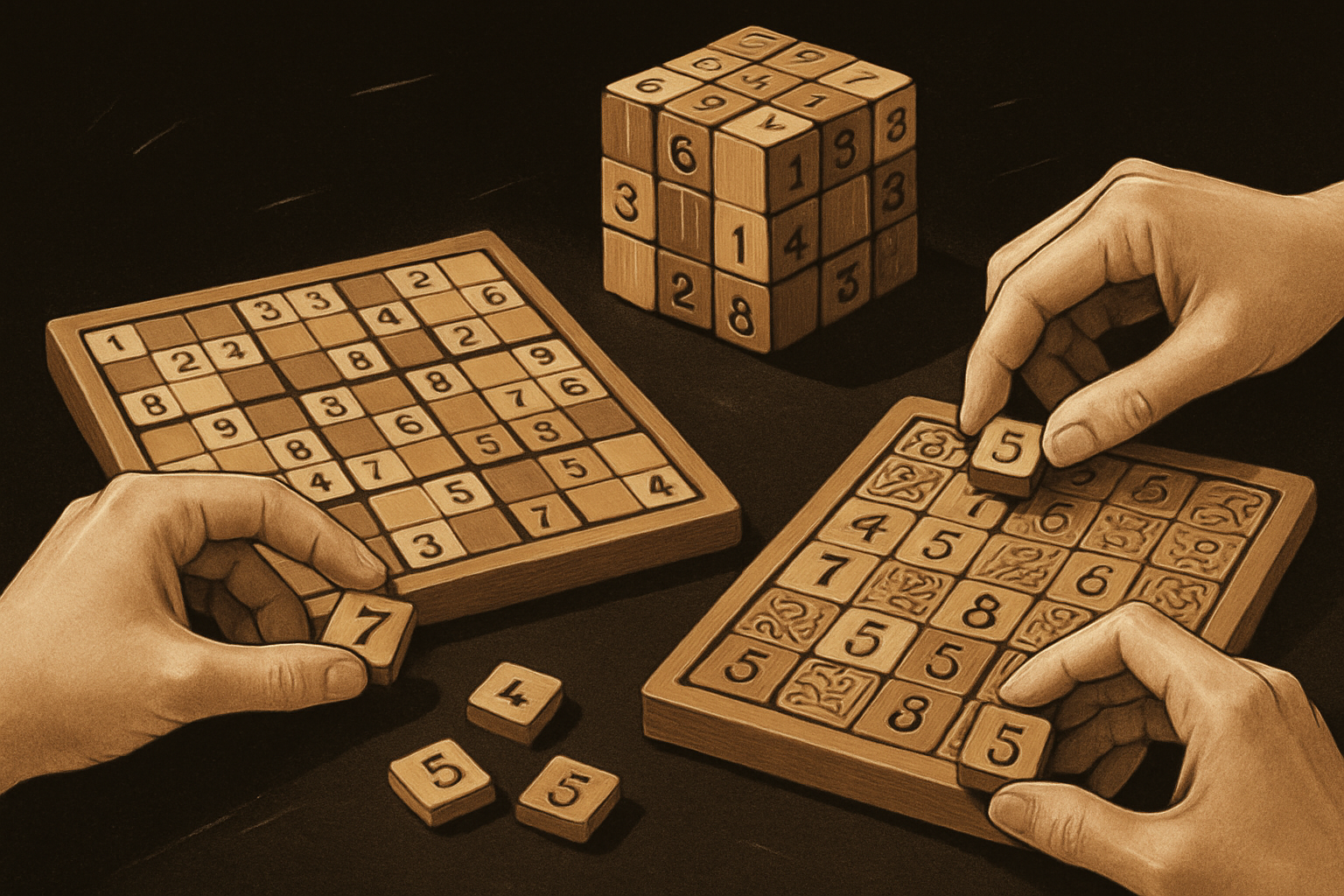Step into the vibrant world of color sudoku, the innovative puzzle craze sweeping minds in 2025. Unlike traditional puzzles, this colorful twist challenges your logic and sharpens your visual skills at the same time.
This ultimate guide is here to make color sudoku easy for beginners. We’ll break down what it is, its unique rules, and the strategies you need to solve your first grid.
You’ll also discover common mistakes to avoid and where to find the best resources for practice. Ready to boost your brainpower and join the growing community? Let’s start your color sudoku journey today!
What is Color Sudoku? Understanding the Basics
Color sudoku is a bright evolution of the world’s favorite logic puzzle. While classic sudoku made its mark in newspapers and puzzle books worldwide, color sudoku brings a fresh twist by swapping numbers for vibrant hues. This change isn’t just cosmetic—it’s transforming how players of all ages experience puzzles.
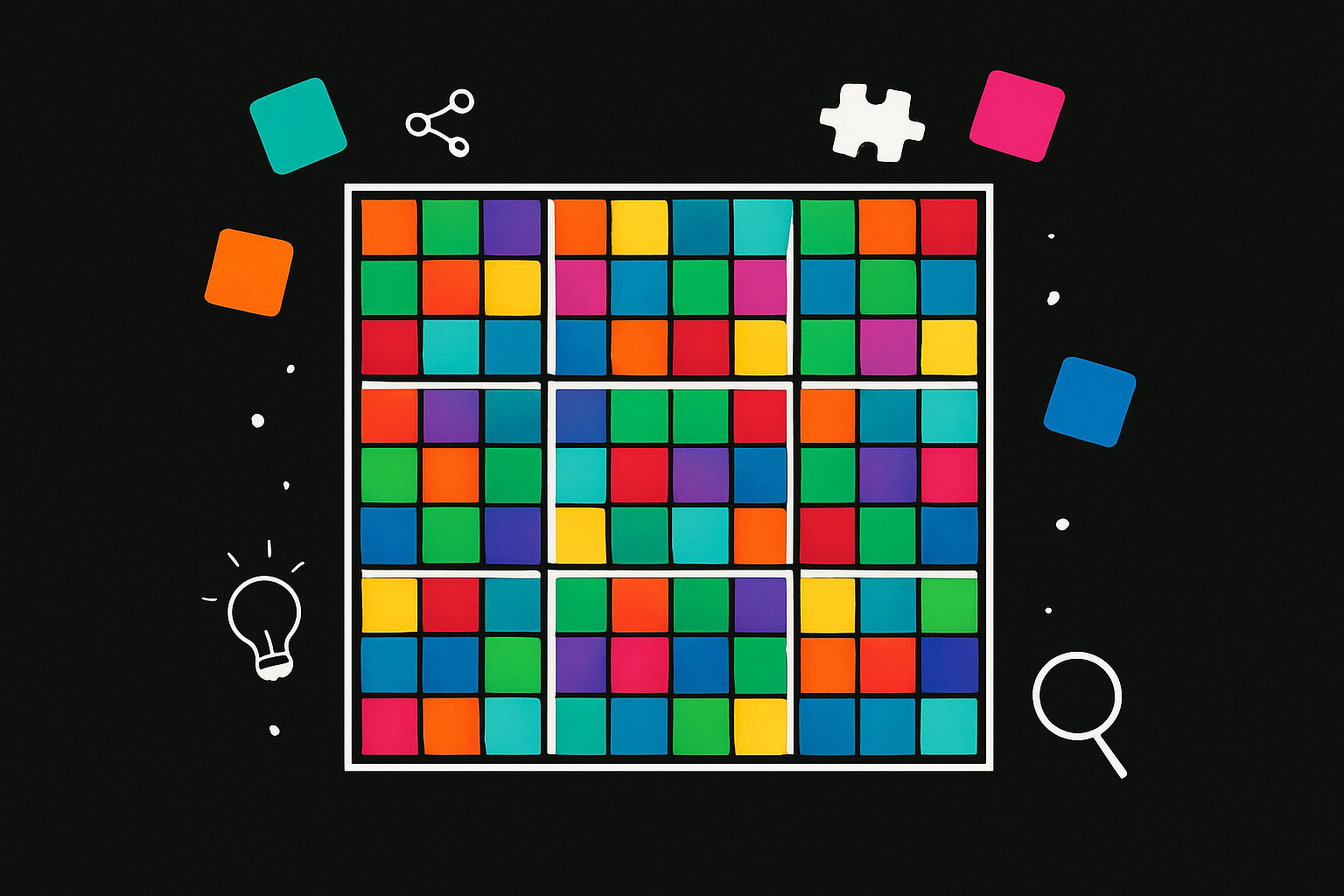
The Evolution from Classic Sudoku to Color Sudoku
Traditional sudoku has charmed millions with its simple rules and deep logic. Originating in the late 20th century, sudoku quickly became a global sensation. Its appeal lies in the challenge of filling a grid so every row, column, and block contains each number exactly once.
In recent years, color sudoku emerged as a creative spin on this classic. Instead of numbers, players use colors to solve the same type of grid. This innovation was inspired by the desire to make puzzles more visually engaging and accessible to a broader audience. Color sudoku now stands at the crossroads of tradition and modern play, blending the familiar with the new.
Core Rules and Differences
At its core, color sudoku follows the same logic as its classic counterpart, but with a vibrant twist. Each cell in the grid must be filled with a unique color, ensuring that no color repeats within any row, column, or block. Common grid sizes include 6×6 and 9×9, though themed versions sometimes use even more colors.
What sets color sudoku apart is the reliance on visual logic and pattern recognition. Players need to pay close attention to subtle differences between colors, which adds a fresh layer of challenge. The puzzle tests not only logical thinking, but also careful observation and color perception. For many, color sudoku feels more intuitive and visually stimulating than the traditional number-based format.
Why Play Color Sudoku?
Color sudoku is more than just an eye-catching puzzle—it’s a powerful tool for brain training. Solving these grids helps boost cognitive development, visual memory, and attention to detail. The engaging use of color also makes it a great choice for younger players or anyone who prefers visual challenges over numerical ones.
Many schools have started using color sudoku in math and logic classes to make learning more interactive. The puzzle’s benefits extend beyond fun as it sharpens problem-solving skills and encourages creative thinking. According to Sudoku's Role in Cognitive Development, games like color sudoku can enhance neuroplasticity and improve cognitive abilities in both children and adults.
Popular Variations and Formats
Color sudoku comes in several exciting variations. The most common formats are 9-color and 6-color puzzles, but there are also themed versions featuring patterns, icons, or even holiday motifs. Players can choose between digital color sudoku apps, which offer features like color customization and hints, or printable puzzles for hands-on fun.
The popularity of color sudoku is on the rise. App downloads surged between 2023 and 2024, showing that more people are discovering the joy of solving puzzles with a splash of color. Whether you enjoy playing on your phone or prefer printed grids, color sudoku offers a fresh and modern way to challenge your mind.
Essential Tools and Resources for Beginners
Jumping into color sudoku is easier than ever thanks to a wealth of beginner-friendly resources and tools. Whether you prefer solving puzzles on paper or your phone, there’s something for every learning style and skill level.
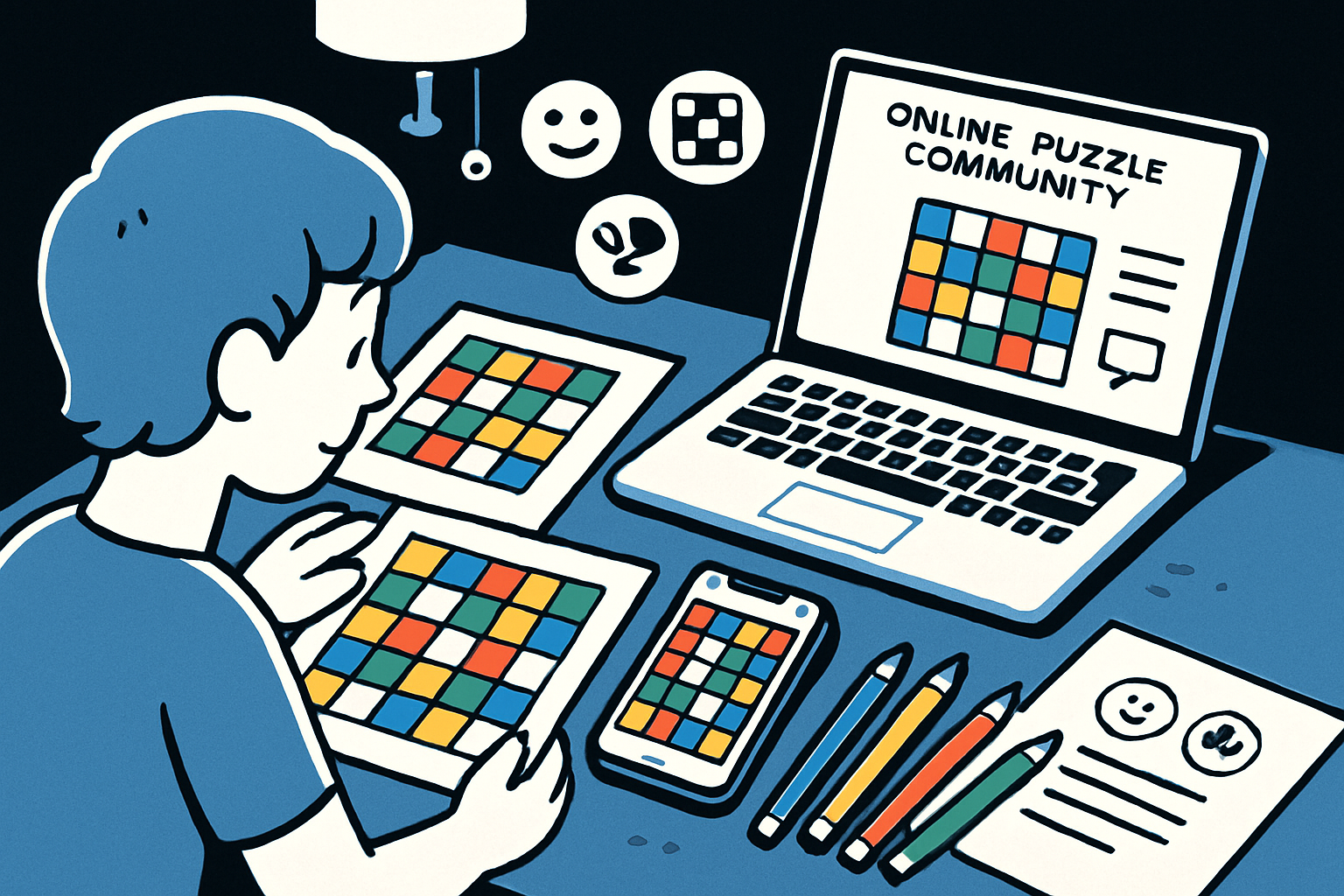
Recommended Materials and Platforms
Starting your color sudoku journey? The right resources make all the difference. Many beginners enjoy color sudoku books packed with graded puzzles and clear instructions. Printable grids, available online, allow you to practice at your own pace.
For those who prefer digital options, top-rated mobile apps and online platforms offer interactive experiences. Look for features such as:
- Customizable color schemes
- Built-in hints and solution checks
- Multiple difficulty levels
Some apps are specifically designed to boost memory and concentration, as covered in Sudoku and Cognitive Skills. These platforms often provide daily challenges and progress tracking.
No matter your preference, exploring a variety of tools helps you find what keeps you motivated and engaged.
Choosing the Right Tools for Learning
Deciding between digital and paper-based color sudoku? Both have unique benefits. Here’s a quick comparison:
| Format | Pros | Cons |
|---|---|---|
| Digital | Undo/redo, hints, color customization | Screen fatigue |
| Paper-based | Tactile, no device needed, creative notes | Limited accessibility |
For colorblind users, many digital platforms now offer adaptive palettes, patterns, or symbols to distinguish colors. This opens up color sudoku to everyone, making the puzzles inclusive and enjoyable.
A popular app for beginners features an adaptive color palette, allowing you to switch between hues or add shapes for clarity. This flexibility ensures that color sudoku remains accessible, regardless of your visual needs.
Try both formats to see which suits your learning style and helps you build confidence.
Community and Support Resources
The color sudoku community is thriving. Beginners will find support and inspiration in:
- Online forums dedicated to color sudoku
- Social media groups sharing tips and challenges
- YouTube channels with tutorial videos
Joining a community keeps you motivated, especially when you encounter tricky puzzles. Many new solvers report faster progress after connecting with others.
Community engagement has surged in recent years, with active groups more than doubling from 2023 to 2024. Whether you’re asking questions, sharing your first completed grid, or joining a friendly competition, tapping into these resources makes your color sudoku adventure more rewarding.
Step-by-Step Guide: How to Solve Color Sudoku Puzzles
Solving your first color sudoku puzzle can feel like cracking a secret code. This step-by-step guide will break down the process, helping you build confidence as you go. Each step is designed to make color sudoku less intimidating, whether you’re brand new or just looking to sharpen your skills.
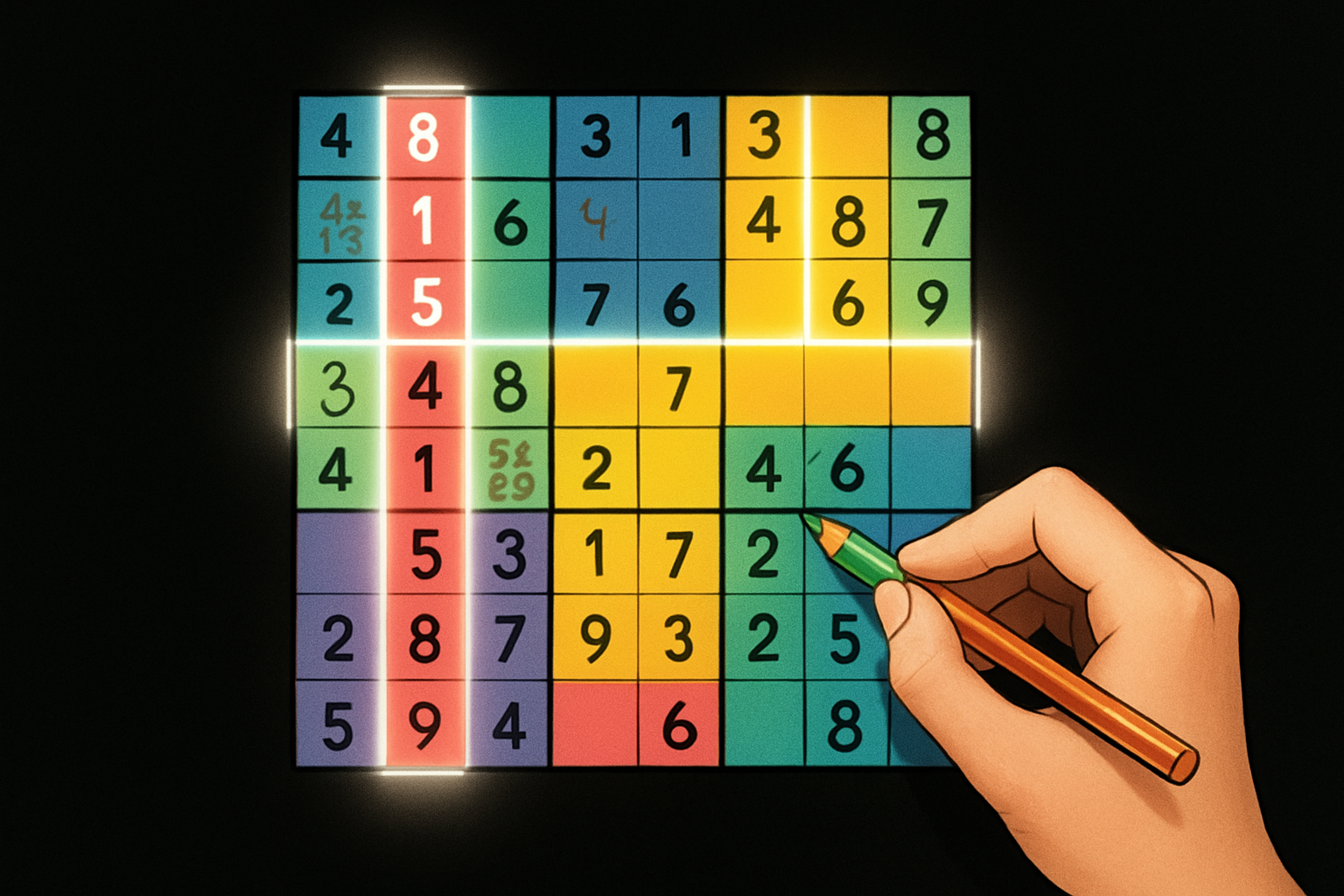
Step 1: Understand the Puzzle Layout
Before you start filling in colors, take a moment to study the layout of your color sudoku grid. Just like classic sudoku, the puzzle is divided into rows, columns, and blocks (usually 3×3 for a 9×9 grid). Instead of numbers, each cell will eventually contain a unique color.
The core rule is simple: each color must appear exactly once in every row, column, and block. Some color sudoku puzzles might use six colors, others nine, and themed versions might include patterns or symbols alongside colors.
Notice how the visual element changes the game. Instead of looking for missing numbers, you’ll be tracking color placement. This shift makes the puzzle an excellent exercise in visual logic and color recognition.
Step 2: Scan for Obvious Moves
Now that you understand the layout, it’s time to scan the grid for easy wins. Start by looking for rows, columns, or blocks where only one color is missing. This is often the best place to make your first move in color sudoku.
Here are some quick techniques:
- Use color elimination: If a color already appears in a row or column, it can’t go there again.
- Fill in the blanks: If a block is missing just one color, place it.
- Cross-reference: Compare rows and columns to pinpoint where specific colors belong.
For example, if the yellow color is present everywhere in a block except for one cell, fill that cell with yellow. This process helps you gain momentum and sets the stage for deeper logical deduction as the puzzle progresses.
Step 3: Use Logical Deduction
With the easy moves out of the way, solving color sudoku gets more interesting. Apply classic sudoku logic, but think in colors. If a color can only go in one spot in a row, column, or block, that’s your next move.
Common logic strategies to use:
- Single possibility: Only one cell can hold a specific color in a row or block.
- Hidden singles: A color might be “hidden” as the only option for a cell, even if other possibilities seem open.
- Color conflicts: Double-check that you’re not placing the same color twice in any row, column, or block.
Beginners sometimes confuse similar shades or accidentally repeat a color. To avoid these pitfalls, take your time and consistently review your work. Color sudoku rewards careful observation and methodical thinking.
If you get stuck, don’t be afraid to backtrack. Sometimes, the right placement becomes clear only after a few more colors are filled in. Remember, color sudoku is about logic, not guesswork. Mastering deduction is key to improving your success rate.
Step 4: Advanced Strategies for Beginners
Ready to take your color sudoku skills up a notch? Start using pencil marks or candidate tracking. With colors, you can jot down possible options in small letters or symbols in each cell. This helps you keep track of which colors might fit where, especially in more challenging puzzles.
Try these advanced strategies:
- Pencil marks: Write small notes for possible colors in tricky cells.
- Block analysis: Focus on one block at a time to spot unique color placements.
- Pattern recognition: Watch for repeating color patterns that can unlock larger sections of the grid.
Let’s walk through a quick example. Suppose you have a block missing three colors: red, blue, and green. By checking adjacent rows and columns, you might see that blue can’t go in two of the empty cells, leaving only one option. Mark it, then move on to the next color.
As you get comfortable, you’ll start to recognize common color arrangements and develop an intuitive sense for which logical strategies work best in color sudoku. Practice makes these advanced techniques second nature.
Step 5: Practice and Review
The final step to mastering color sudoku is consistent practice and thoughtful review. Start with easier puzzles and work your way up to medium and hard difficulties. Many beginners solve their first color sudoku in about 20–30 minutes, but speed comes with time.
Analyze your mistakes after each puzzle. Did you mix up similar colors? Did you skip a logical step? Learning from these moments is crucial. Using digital platforms or apps can help, especially those offering hints, undo options, and colorblind-friendly settings.
Want to boost your learning even more? Studies show that regularly practicing sudoku and its variants can sharpen memory and logical thinking. You can read more about the Cognitive Benefits of Sudoku to understand how these puzzles enhance your brain health.
Remember, color sudoku is as much about the journey as the destination. Stick with it, celebrate your progress, and enjoy the colorful challenge!
Common Mistakes and How to Avoid Them
Struggling with color sudoku as a beginner? You're not alone. Many new players make similar errors that slow their progress or spoil the fun. Let’s break down the most common pitfalls and how to sidestep them, so you can enjoy a smoother learning curve.
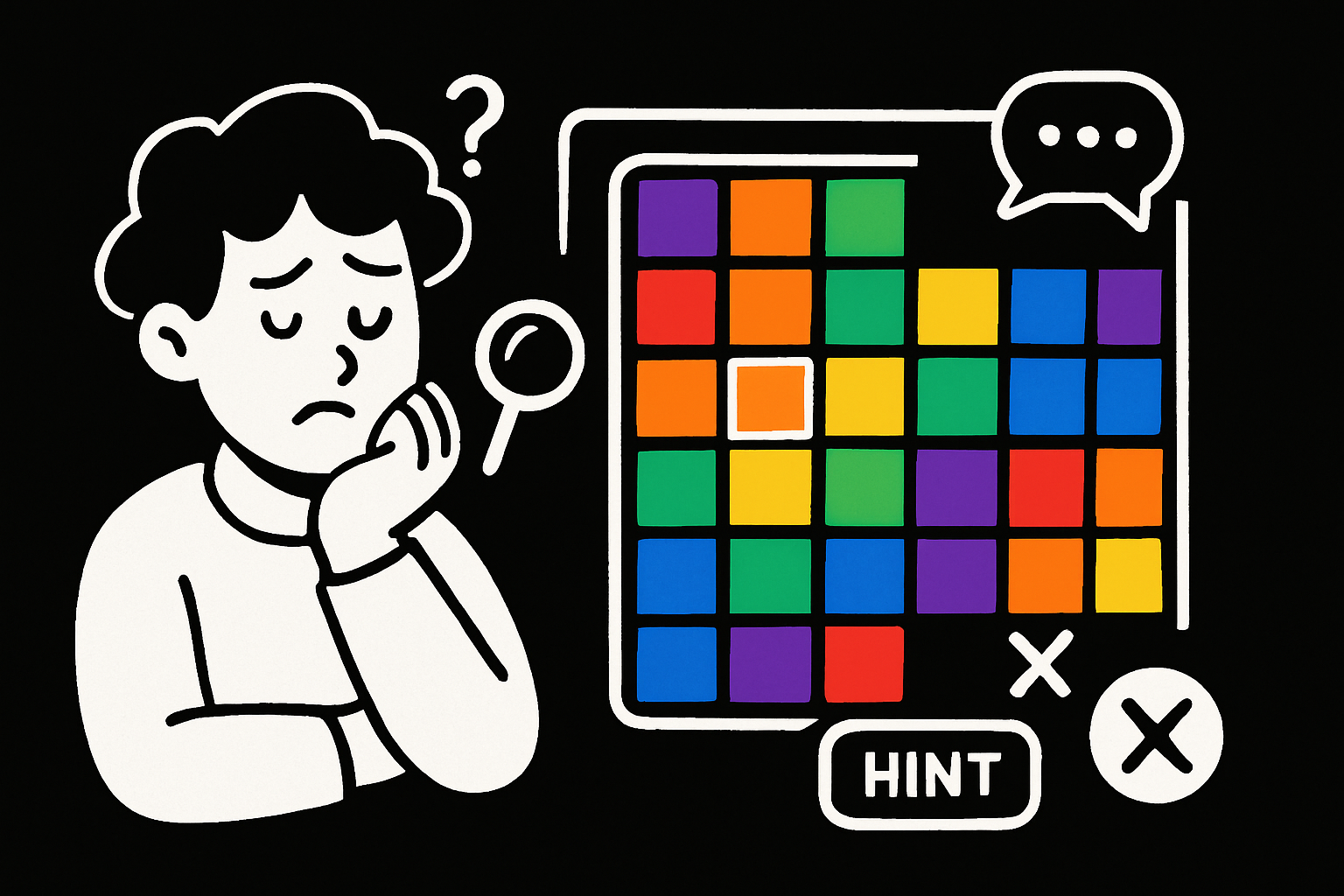
Misinterpreting Colors and Symbols
One of the biggest stumbling blocks in color sudoku is mixing up similar shades. When the puzzle uses colors like light blue and teal, it’s easy to confuse them, especially under different lighting.
- Always double-check the color legend before you start.
- If you’re colorblind or struggle with certain shades, look for color sudoku puzzles that add symbols or patterns to each color.
- Adjust your screen’s brightness or print puzzles using high-contrast settings to make distinctions clearer.
Taking a moment to verify each color placement can save you from frustrating errors later in the game.
Overlooking Basic Sudoku Logic
Don’t let the splashy colors fool you—color sudoku follows the same logical rules as classic sudoku. Each color must appear only once per row, column, and block.
- Watch out for duplicate colors in a row or block.
- Double-check your moves against the basic rules before filling in a square.
- Some beginners get so focused on colors that they forget the underlying sudoku structure.
If you’re stuck, step back and scan the grid as if it were a number puzzle. This helps keep your logic sharp and your color sudoku on track.
Rushing and Skipping Steps
Excitement can lead to hasty placements in color sudoku. Rushing often results in missed patterns or overlooked mistakes.
- Slow down and approach each move methodically.
- After each placement, scan the affected row, column, and block for conflicts.
- Use a checklist or develop a mental routine for reviewing your steps.
Pausing to double-check your work may seem time-consuming, but it leads to fewer errors and a more satisfying color sudoku experience.
Not Using Available Tools
Many color sudoku apps and printable puzzles offer helpful features like hints, undo buttons, and pencil marks. Beginners sometimes ignore these, thinking they should solve everything on their own.
- Don’t hesitate to use hints when you’re stuck.
- Pencil marks help you track possible color options in each cell.
- The undo feature lets you safely backtrack if you spot a mistake.
A beginner who started using these tools reported solving puzzles 30% faster after a week of practice. Embrace these aids—they’re designed to help you master color sudoku.
Ignoring Community Advice and Resources
Trying to figure out color sudoku in isolation can slow your progress. Online forums, social media groups, and video tutorials are packed with strategies and support.
- Join a beginner-friendly group to ask questions and share tips.
- Watching others solve puzzles can reveal new strategies.
- According to recent data, 70% of new players improve after joining a color sudoku community.
If you’re interested in how puzzles like color sudoku can benefit your brain, check out this Sudoku's Impact on Brain Health article for more insights.
Tips, Strategies, and Practice Routines for Fast Improvement
Looking to get better at color sudoku quickly? With the right approach, you can sharpen your skills and see real progress. Let’s break down the best habits, strategies, and routines for leveling up your puzzle-solving game.
Building Consistent Solving Habits
Consistency is the secret sauce for mastering color sudoku. Set aside a regular time each day or week for practice. Whether it’s 10 minutes over morning coffee or a longer weekend session, a steady routine pays off.
Try these habit-building tips:
- Schedule color sudoku practice on your calendar.
- Use a log or app to track completed puzzles and times.
- Set mini-goals, like finishing three puzzles a week.
Practicing color sudoku regularly helps you spot patterns faster and builds confidence. Over time, you’ll notice your solving speed and accuracy improving.
Developing Visual Memory and Color Recognition
Strong visual memory is key for color sudoku. Sharpen your ability to recall color placements and recognize patterns with focused exercises.
Consider these simple activities:
- Memory games using colored cards or digital apps.
- Matching games that challenge you to recall color sequences.
- Practicing color sudoku puzzles with time limits to boost recall.
As you train your visual memory, you’ll find it easier to track which colors go where. This skill is especially helpful as puzzles grow more complex.
Leveraging Beginner-Friendly Strategies
Start with strategies that make color sudoku less intimidating. Focus on easy wins to build momentum and confidence.
Try these beginner tactics:
- Fill in unique colors that only appear once in a row, column, or block.
- Use crosshatching to narrow down possible placements.
- Analyze blocks for missing colors before moving to tougher spots.
These approaches help you break down the puzzle into manageable steps. As you get comfortable, you’ll naturally move on to more advanced color sudoku techniques.
Adapting to Increasing Difficulty
As you progress, color sudoku puzzles will get trickier. Don’t shy away from the challenge—use it as a chance to grow.
Tips for adapting:
- Move from easy to medium puzzles gradually.
- Use hints or solution checkers when you’re genuinely stuck.
- Review completed puzzles to spot where you struggled.
Recognizing when to ask for help is a strength, not a weakness. With each new difficulty level, your skills will become sharper and more flexible.
Staying Motivated and Avoiding Burnout
Motivation can fluctuate, so it helps to have strategies for staying engaged with color sudoku. Celebrate small wins and keep things interesting.
Ways to stay on track:
- Set achievable milestones, like solving your first medium puzzle.
- Join online challenges or friendly competitions.
- Take breaks if you feel frustrated or stuck.
Remember, color sudoku is a journey. Enjoy the process and reward yourself for progress, no matter how small.
Resources for Ongoing Learning
There’s a wealth of resources to support your color sudoku journey. Tap into guides, videos, and puzzle collections to keep learning.
Recommended resources:
- Advanced color sudoku guides and books.
- Expert YouTube tutorials for visual learners.
- Online communities such as Reddit’s Sudoku subreddit for tips and support.
- Apps with graded puzzles and daily challenges.
Studies show that beginners who follow structured learning routines have higher success rates. By exploring these resources, you’ll always have fresh challenges and support as you master color sudoku.
The Future of Color Sudoku: Trends and Innovations in 2025
The world of color sudoku is evolving rapidly in 2025, bringing new technology, greater inclusivity, and global excitement. Let’s dive into the most important trends shaping the future of this vibrant puzzle.
Technological Advancements
Technology is pushing color sudoku into exciting territory. AI-driven puzzle generators now tailor difficulty to your skill level, creating endless unique challenges. Adaptive color palettes make every game fresh, while AR and VR platforms let you solve color sudoku in immersive 3D environments. Imagine moving pieces with hand gestures or exploring a puzzle grid as if you’re inside it!
These innovations make color sudoku more engaging than ever. As new devices launch, expect even more interactive features, from voice-guided hints to real-time multiplayer matches.
Educational and Therapeutic Applications
Color sudoku is finding a home in schools and therapy centers worldwide. Teachers use these puzzles to boost math, logic, and visual memory in students of all ages. The visual aspect of color sudoku makes it especially accessible for younger learners and those who struggle with traditional number puzzles.
Therapists are also turning to color sudoku to aid in cognitive rehabilitation. Studies show that solving these puzzles can help improve attention, memory, and problem-solving skills for patients recovering from brain injuries.
Expanding Accessibility and Inclusivity
In 2025, color sudoku is more inclusive than ever. Developers are adding features like patterns, textures, and symbols to help colorblind players enjoy the game without frustration. Leading apps, such as Color Sudoku Pro, offer customizable palettes and accessibility settings to suit every player’s needs.
Community initiatives are working to broaden participation by hosting workshops and sharing resources. As a result, more people can join the color sudoku movement regardless of their abilities.
The Growing Global Community
The color sudoku community is booming. International competitions and online tournaments are drawing players from every continent. Social media groups and forums are buzzing with puzzle swaps, strategy tips, and friendly challenges.
According to recent projections, the number of color sudoku players worldwide is expected to double by the end of 2025. This surge is fueled by the game’s accessibility and the sense of connection it brings to fans everywhere.
Predictions for the Next Wave of Puzzle Innovation
What’s next for color sudoku? Experts predict we’ll see hybrid puzzles that combine numbers, colors, and symbols for even deeper logic challenges. AI will continue to shape puzzle design, offering personalized learning paths for every player.
As technology and creativity evolve, color sudoku is set to remain at the forefront of logic gaming. The future promises even more ways to play, learn, and connect through this colorful puzzle adventure.
Now that you know the ins and outs of Color Sudoku and have a toolkit of strategies to get started, why not put your new skills to the test? Whether you’re curious to see how colors change the game or eager to build your confidence with real puzzles, it’s time to dive in and have some fun. You don’t need to wait—just head over and Play Sudoku Online! to explore colorful grids, challenge yourself, and connect with fellow beginners. Let’s start your Color Sudoku journey together—one vibrant puzzle at a time!

